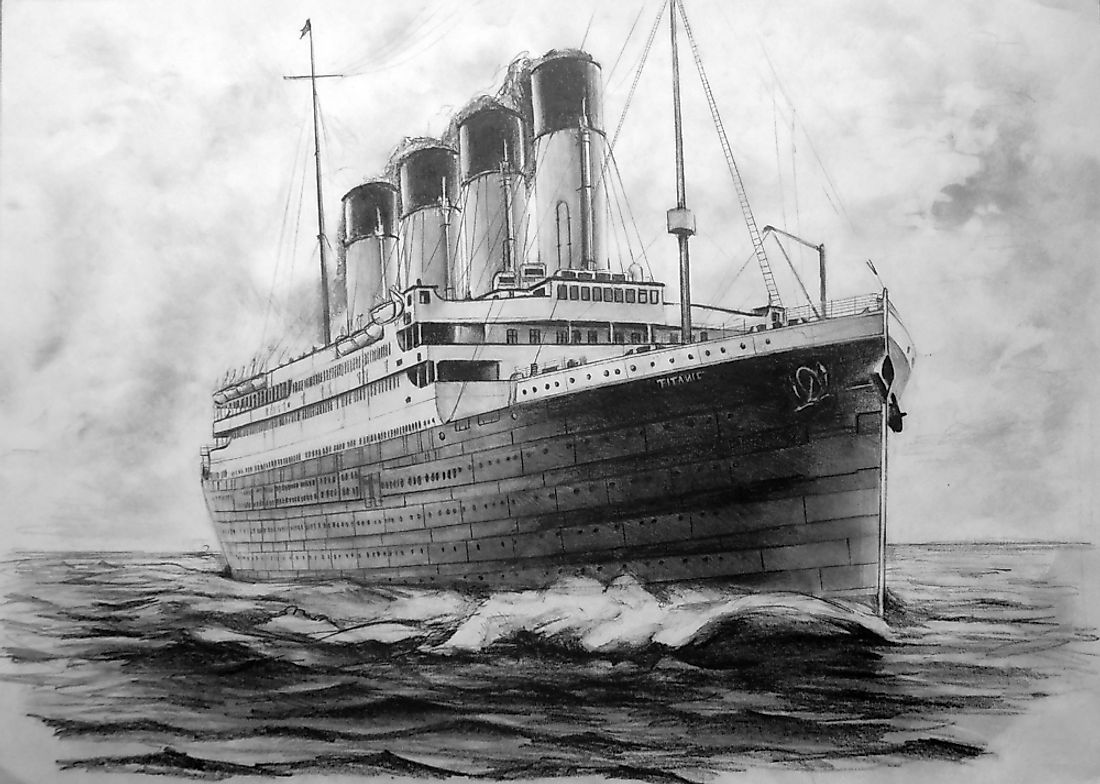What is a Maiden Voyage?

The term maiden voyage refers to the first expedition made by a vessel after its performance has been tested. The term has also been used to mean a person’s first time doing something. Before a ship’s maiden voyage, a bottle of alcohol (usually champagne) is broken over the ship’s bow for good luck. The history associated with maiden voyages dates back to ancient times with ancient civilizations having special ceremonies to invoke their gods to protect them on long ocean voyages. The ancients brought shrines into their ships, and the tradition proceeded long into the Middle Ages. Most ships have successful maiden voyages; however, some have been tragic, with the most famous being the RMS Titanic.
Notable Maiden Voyages
The RMS Titanic
The RMS Titanic was one of the world’s most famous ships not only because it was the largest ship at the time of its completion but also because it met a tragic end during its maiden voyage. The owners of the Titanic chose to forego the traditional elaborate ship launching ceremony. The ship’s maiden voyage began on April 10, 1912, under the command of Captain Edward Smith with about 2,224 people on board. Two days after the ship’s launch at around 11:40 pm the ship struck an iceberg on the starboard side which allowed water to get into the ship. The ship took around 2 hours and 40 minutes to completely sink with the death toll estimated at more than 1,500 people. Most of the deaths were due to the ship’s crew not being adequately prepared for such an event and the ship not having enough lifeboats.
The Mohawk
Launched on June 10, 1875, the Mohawk was owned by William T. Garner and was the largest racing yacht of the time at 140 feet. The yacht’s doomed maiden voyage began on July 20, 1876, off Staten Island with the entire Garner family on board. A sudden violent gust of wind struck the yacht making it capsize. The accident had no survivor as everyone on board drowned. The yacht was later recovered and renamed the Eagre. The Eagre participated in a survey of the Nantucket Shoals led by Lieutenant E.M. Hughes.
The Vasa
The Vasa was constructed at the command of King Gustavus Adolphus as the flagship of the standby regiment. The ship was under the command of Captain Sofring Hansson who received the command to set sail on the ship’s maiden voyage on August 10, 1628, from Alvsnabben. After a journey of approximately 4,200 feet to Tegelviken, water began filling the ship from the open gun ports. A strong wind had filled the ship’s sails, and because it was unstable, it was unable to right itself when forced on the port side. Thirty people died in spite of all the efforts of ships nearby. The ship was salvaged in 1961 and is now a major tourist attraction.
Safety Standards on Present-day Vessels
To prevent a catastrophic loss of life on a transport vessel stringent safety requirements have been set up. All ships are required to have enough lifeboats for all the people on board and the crew expected to be trained on proper evacuation procedures. Transport vessels are only certified once they have proven to have met all the required safety measures.











